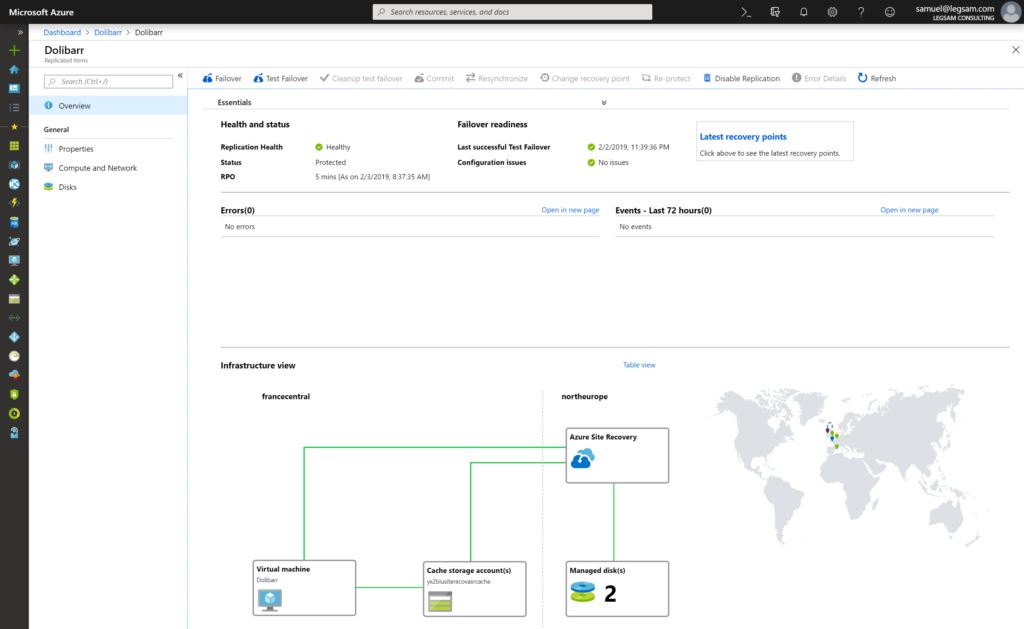All my consulting billing solution is based on a nice open source project called Dolibarr (https://www.dolibarr.org/). I used to keep a VM running on my laptop or my lab but the main pitfall of those solutions is that there is no real backup/resiliency and, as billing is the most important thing for a company, I looked for a better solution and here we are: let’s move it to the Cloud!
As a Microsoft partner, I do have $100 credit per month included in my Action Pack so I decided to migrate my billing VM in the Microsoft Cloud. The aim of this article is not to talk about the installation and configuration of the Linux VM and the ERP/CRM software but to share how you can have a backup and resilient server on Azure.
Prerequisites
Firstly, you will need:
- A valid and active Azure subscription
- A Virtual Machine running on Azure
Enable backup on an Azure VM
To start the backup process of your VM, you need to logon on the Azure Portal (https://portal.azure.com) and go to the Virtual Machine you want to backup and choose the Backup operation.
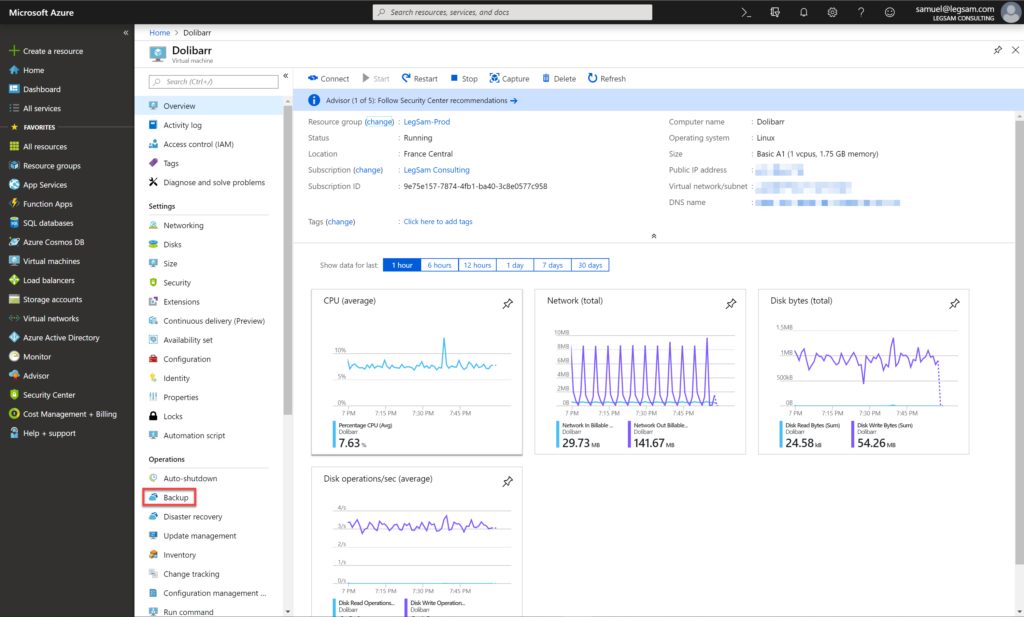
As you can see in the following exhibit, by default, Azure Backups are performed on a daily basis at 6:30 AM UTC and kept for 180 days:
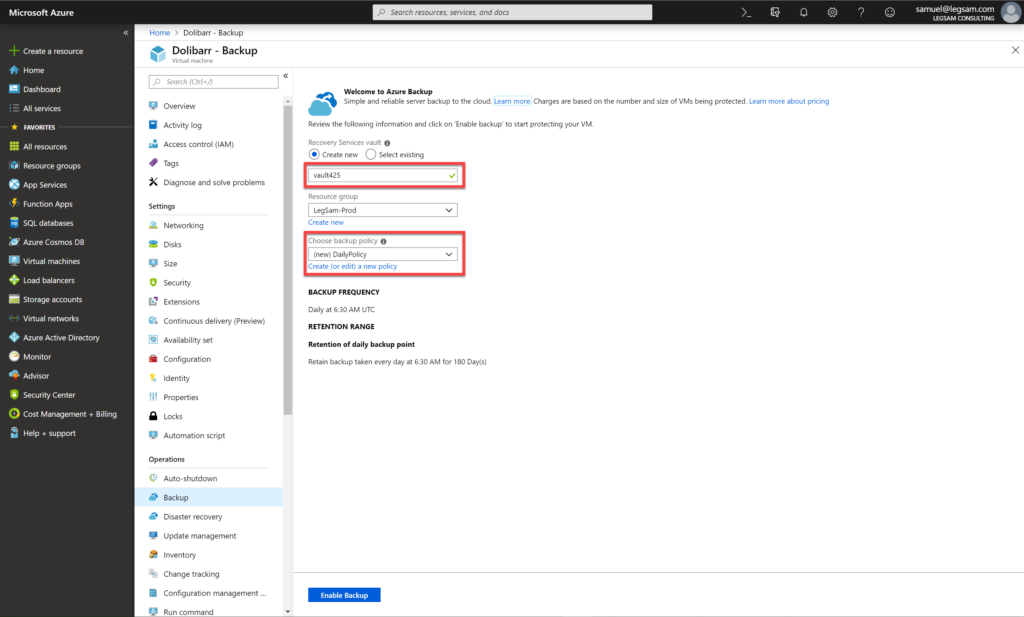
Of course, you can customize the backup policy by clicking Create (or edit) a new policy :
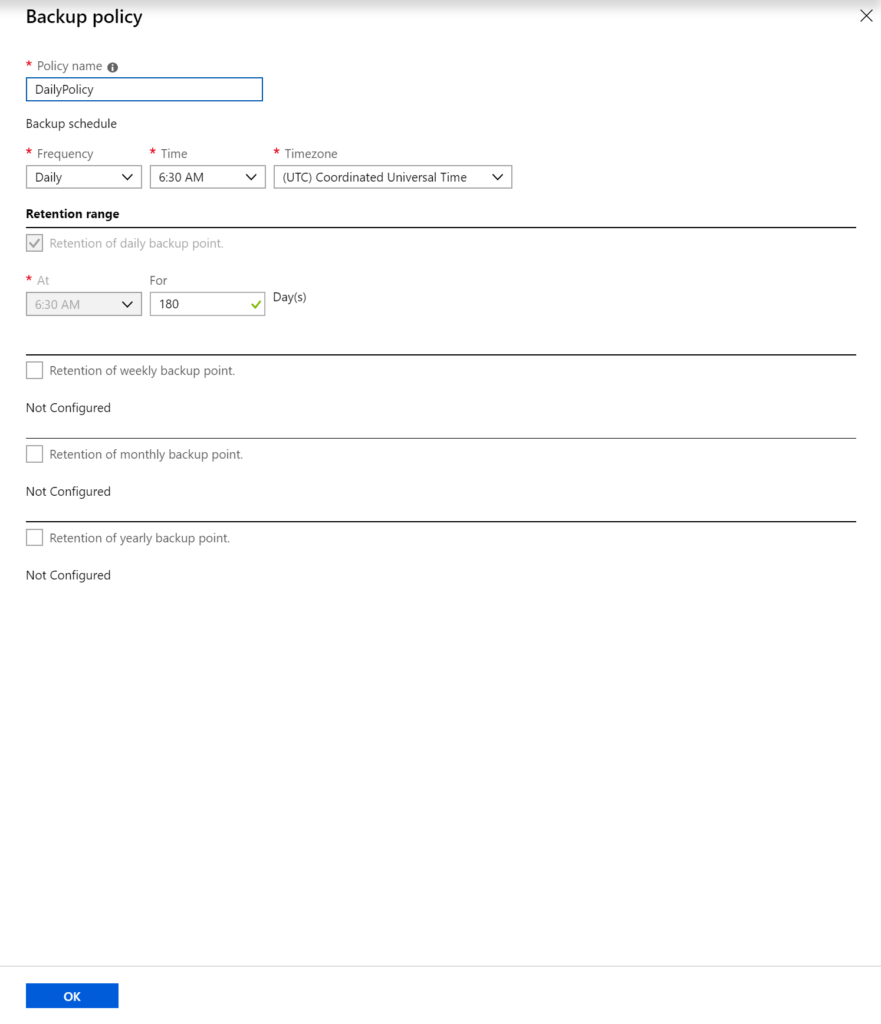
For example, here is the Backup Policy I’m currently using:
- Every day at 2:30 AM Paris Time
- 30 days retention for the daily backup
- 12 weeks retention for the Sunday backup
- 24 months retention for each first Sunday of a month backup
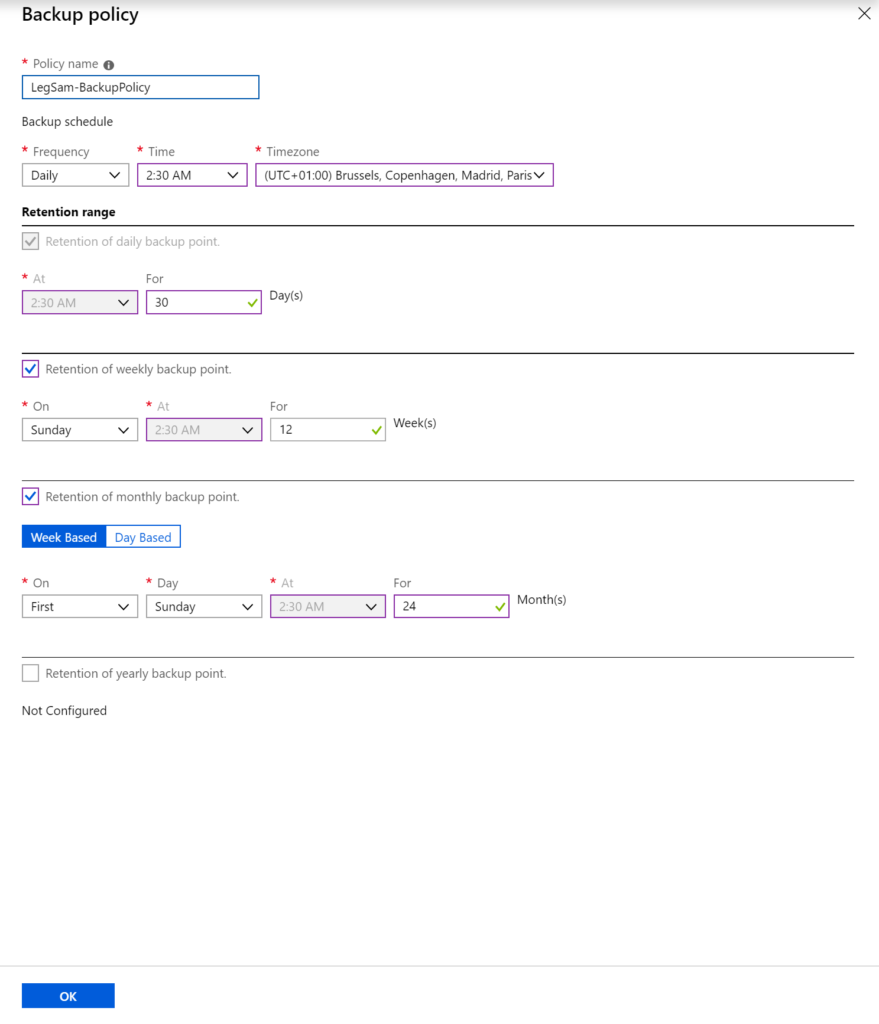
After a few minutes, you should be able to have this screen:
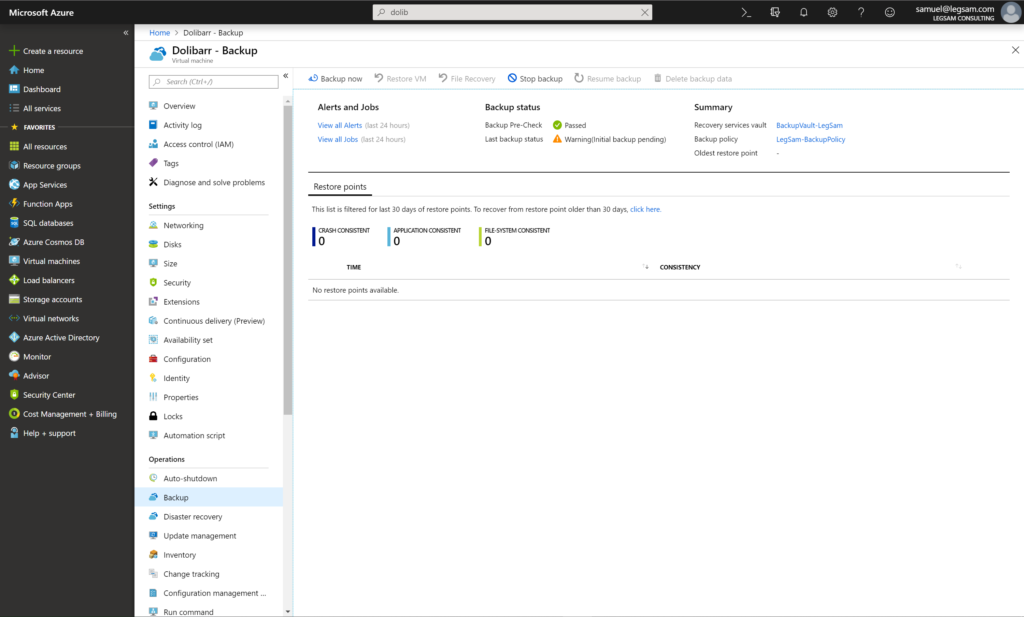
As you can see, a warning is present because the initial backup is pending. To fix this, you can wait for the first backup or launch a manual one by clicking on Backup now.
Enable resiliency for an Azure VM
Disaster Recovery is also available as an operation for each VM and you can enable it by clicking on the corresponding link on the VM page:
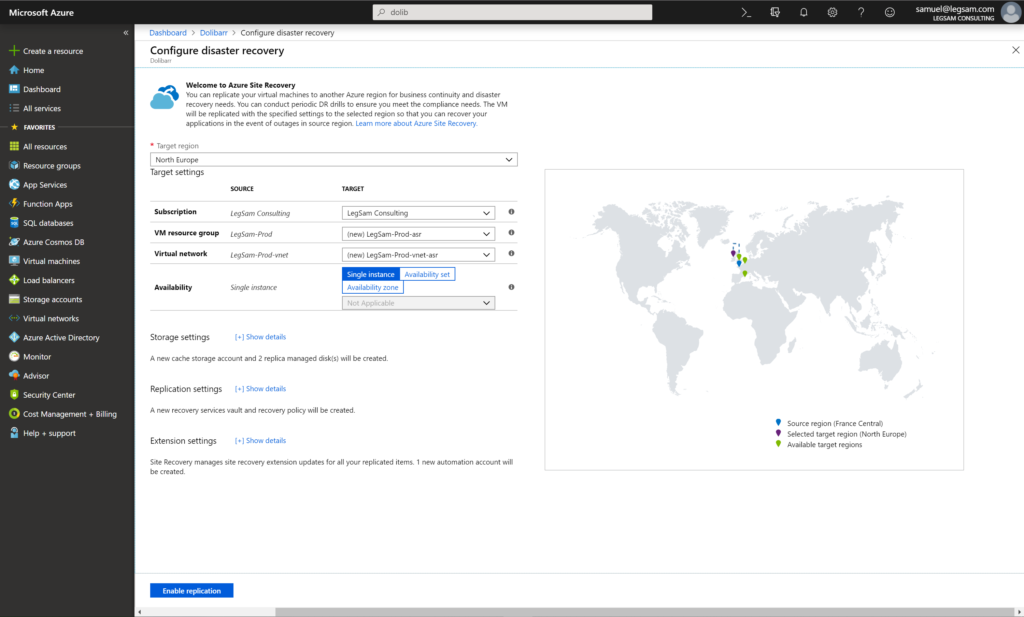
As you can see, by default, the Virtual Machine will be replicated:
- In the North Europe region (because the base VM is in France Central)
- Into the same subscription than the base VM)
- In a new Ressource Group
- Using a new Virtual Network
The main characteristic is the region where you want to replicate your VM to. You need to know that replication can be activated only within the same geographic cluster. The following table, give you the option you can have:
| Geographic cluster | Azure regions |
|---|---|
| America | Canada East, Canada Central, South Central US, West Central US, East US, East US 2, West US, West US 2, Central US, North Central US |
| Europe | UK West, UK South, North Europe, West Europe, France Central, France South |
| Asia | South India, Central India, Southeast Asia, East Asia, Japan East, Japan West, Korea Central, Korea South |
| Australia | Australia East, Australia Southeast, Australia Central, Australia Central 2 |
| Azure Government | US GOV Virginia, US GOV Iowa, US GOV Arizona, US GOV Texas, US DOD East, US DOD Central |
| Germany | Germany Central, Germany Northeast |
| China | China East, China North, China North2, China East2 |
– For Brazil South region, you can replicate and fail over to one of the following: South Central US, West Central US, East US, East US 2, West US, West US 2, and North Central US regions. It should be noted that Site Recovery has only enabled Brazil South to be used as a source region from where VMs can be protected. It cannot be used as a Target DR region for any of the Azure regions like South Central US. The reason being latency observed due to geographical distance it is recommended to select any other America’s region other than Brazil South.
– If you are not able to see a region where you want to create a vault then make sure your subscription has access to create resources in that region. For example: If you are not able to create vault in France South then your subscription doesn’t have access to France south region. Please file support ticket under issue Type “subscription management” and problem type “other General questions” subject ” whitelist subscription for the XXX Azure region”
– If you are not able to see a region within a Geographic cluster during enabling replication then make sure your subscription has access to create virtual machine in that region. For example: If you are trying to protect virtual machines from France Central to France south and don’t see France south under the region drop down then your subscription doesn’t have access to deploy VM in that region. Please file support ticket under issue Type “subscription management” and problem type “other General questions” subject ” whitelist subscription for the XXX Azure region”
– You cannot select regions across geographic clusters mentioned above.
Once the region choosen, you just have to click on Enable replication. It take some time to have the machine protected as the whole VM need to be replicated. As you can see bellow, the replication is a 5 steps process:
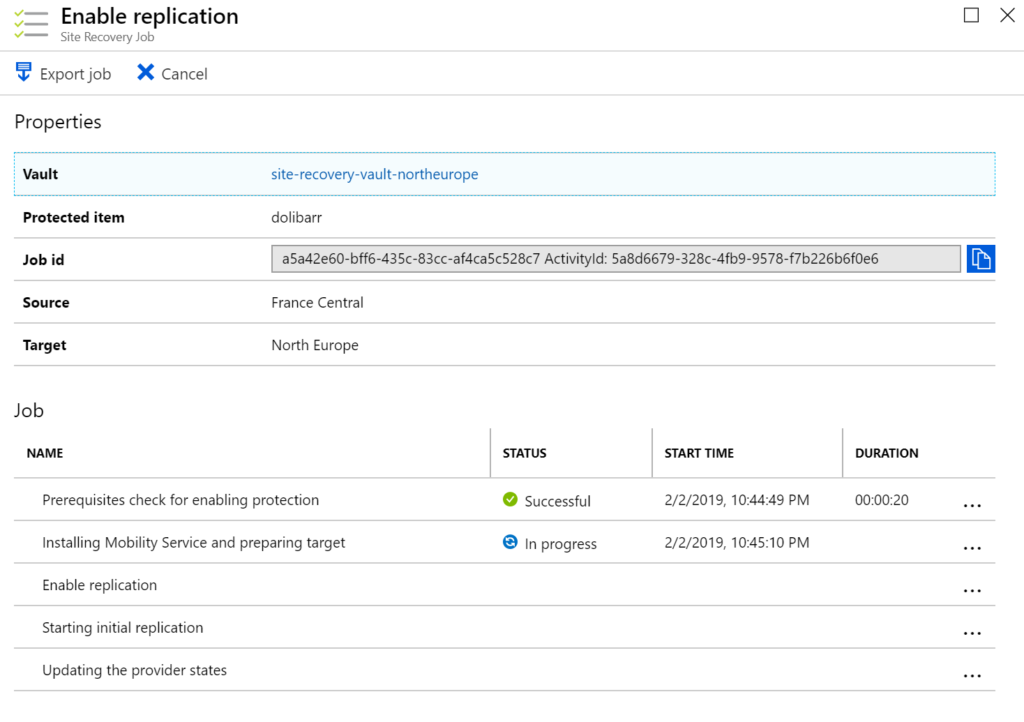
There is a direct impact on the network usage of the Virtual Machine you are replicating. Depending of the size of the VM, the initial synchronization can take some times.
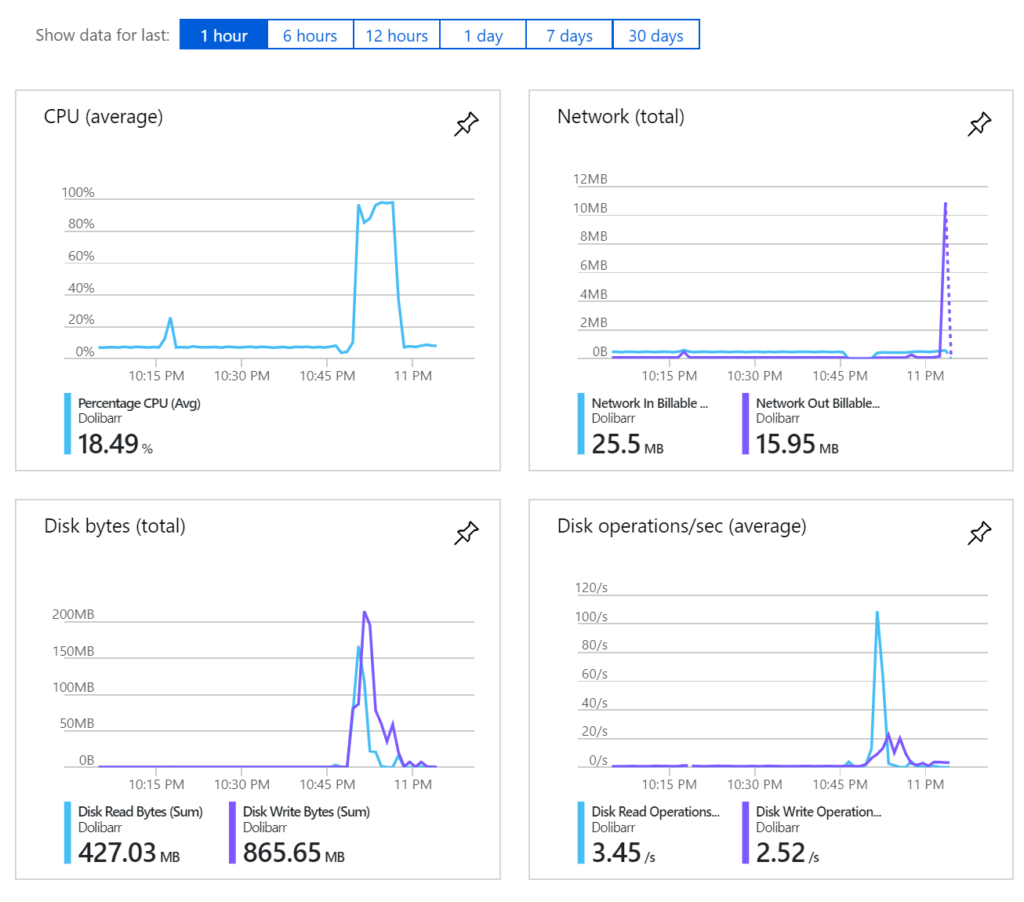
Once the initial synchronization is finished, you will be able to test it and to fail-over to the chosen region.
Disaster recovery – Testing
The first operation that you need to do when talking about Disaster Recovery is TESTING! Microsoft is pointing it out on the status of the Disaster Recovery page of the newly replicated VM:
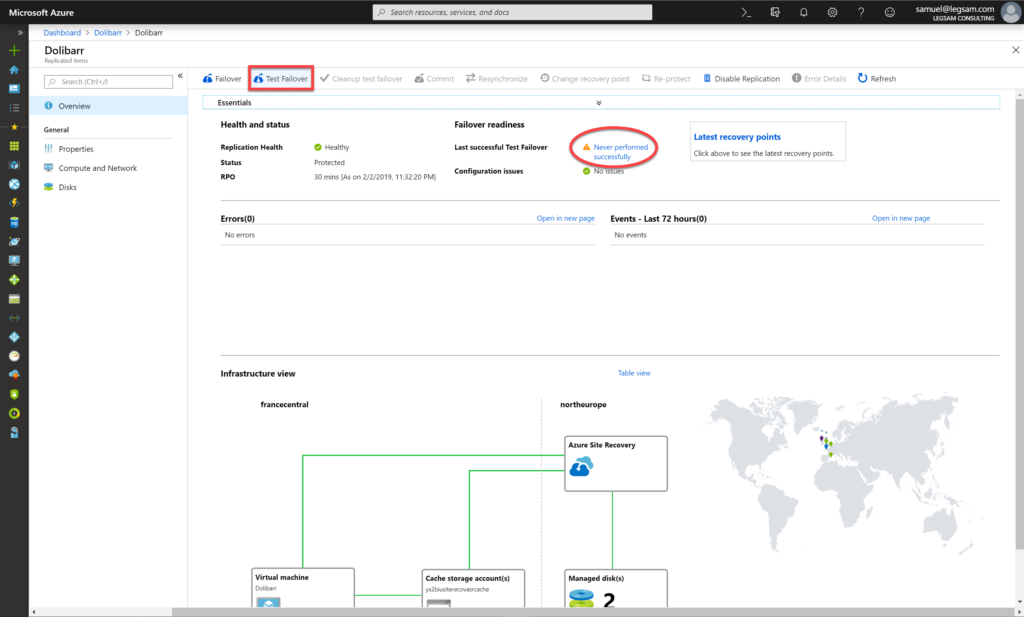
To launch the Test, you need to click on Test Failover, the following form will appear:

If you want you can create a specific Virtual Network. For this VM, I used the production one by validating the form. After the failover test, you will be able to see the test VM:

You can now add a public IP and test your VM to see how it’s going! After testing, you will need to click the Cleanup test failover link to remove all the corresponding ressources:

You now need to provide a notes and to confirm that the test is completed:
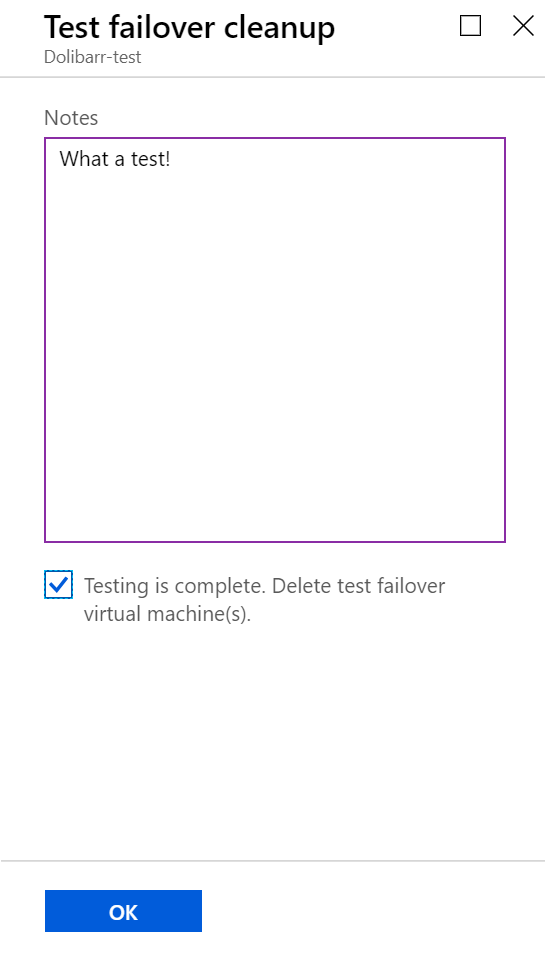
This is it! you are now well prepared for a real disaster!
